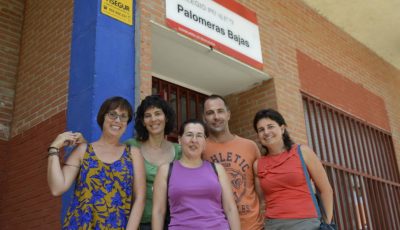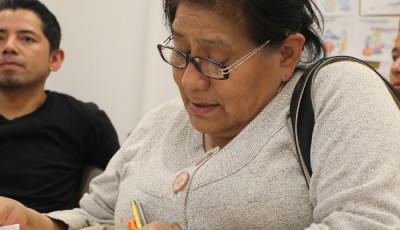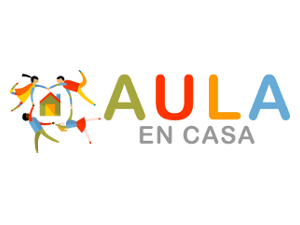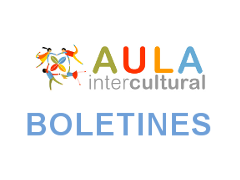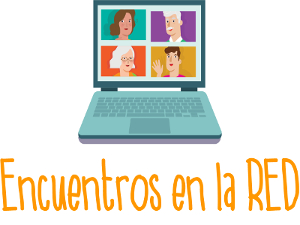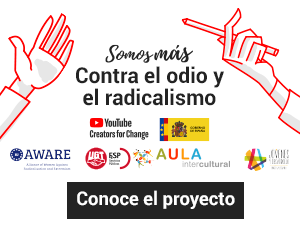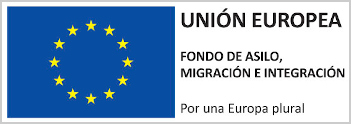Multilingualism as a Resource: the Lexical Appropriation of Cameroon Indigenous Languages by English and French
George Echu (Yaounde)
For quotation purposes: George Echu (Yaounde): Multilingualism as a Resource: the Lexical Appropriation of Cameroon Indigenous Languages by English and French. In: TRANS. Internet-Zeitschrift für Kulturwissenschaften. No. 13/2002. WWW: https://www.inst.at/trans/13Nr/echu13.htm
Cameroon is a linguistic paradise comprising 247 indigenous languages, Pidgin English and two official languages (English and French). This figure, advanced by Breton and Fohtung’s (1991) study, is re-echoed by Boum Ndongo-Semengue and Sadembouo (1999).
Introduction
Cameroon is a linguistic paradise comprising 247 indigenous languages, Pidgin English and two official languages (English and French). This figure, advanced by Breton and Fohtung’s (1991) study, is re-echoed by Boum Ndongo-Semengue and Sadembouo (1999). Yet it appears to be relatively conservative when one takes into consideration the recent statistics published by SIL International (2002) in Ethnologue(2) which credits Cameroon with 279 indigenous languages, English, French and Cameroon Pidgin English (CPE). If we agree with Jean-Louis Roy (1993) that Africa possesses a little over 1000 indigenous languages, then Cameroon’s number alone could be considered really impressive, whether one goes for the older conservative figure or the most recent one.
Over the years, some language scholars and political observers entertained fears that such a multilingual situation is a potential source of conflict, a factor that can bring about political disintegration. Yet, the reverse side of the coin is also true, for multilingualism constitutes an invaluable resource, a source of linguistic and cultural enrichment. Our study posits that the lexical appropriation of Cameroonian indigenous languages by English and French constitutes a source of lexico-semantic and cultural enrichment for the two official languages, and thus permits them to express more vividly certain realities pertaining to the Cameroonian context. In so doing, English and French gain in vitality and thus become the expression of our national culture and identity. Such a linguistic situation should naturally favour cultural integration and national unity, ideals that have been the preoccupation of successive governments since the independence of the country in 1960.
As concerns the influence of indigenous languages on the official languages, it is important to observe that the language contact situation in Cameroon has resulted in influences from various levels of linguistic structure – phonological, lexical, morphological, syntactic, etc. Our main concern in this study is relexification or lexical borrowing from the indigenous languages (donor languages) to the official languages (recipient languages)(3). Thus, cases of lexical interference are not considered at all, given that they do not culturally affect the structure of the recipient language(s) in a durable manner.
Methodological Concerns
The present study is primarily based on a corpus compiled from a wide spectrum that ranges from everyday oral usage to written contexts such as newspapers, written documentation and literary works both in English and French. Apart from individual sources, our study has benefited enormously from the research findings of Cameroonian and foreign researchers working on the lexis of English and French as used in Cameroon.
Some of the research works concerning lexical borrowing in English from Cameroonian indigenous languages which were beneficial to this study include Simo Bobda (1983), Kouega (1998), Ubanako (2000) and Wolf (2001). Of course we do also acknowledge having gained indirectly from collective research projects such as the Corpus of English in Cameroon (CEC), compiled by a team at the University of Yaounde I as part of the International Corpus of English (ICE) project, and the «Corpus Calixthe», compiled by Bettina Peters and Susan Navissi of Humboldt University of Berlin in Germany (cf. Wolf, 2001:243f).
As far as the French language is concerned, lexical borrowing from indigenous languages has attracted more systematic attention and resulted in in-depth studies from scholars than in the English language. For instance, the IFACAM (Inventaire des Particularités Lexicales du Français en Afrique – Cameroun) team has been working since the late 70s on the lexical peculiarities of the French language in Cameroon. The first inventory was published in 1979 by some Cameroonian and foreign researchers. Research work has since continued, especially with the revival of the project under the leadership of Jean Tabi Manga. Our personal involvement in this research team since 1998 has been quite instrumental in exposing us to the existing inventory and making us part of the constitution of a more comprehensive inventory that will eventually lead to the publication of a dictionary of Cameroon French. Researchers have therefore either benefited from this existing corpus or even contributed to its enrichment, especially as far as lexical items from indigenous languages are concerned: Mendo Ze (1990), Ngo Bitchocka (1992), Ewouelle (1995), Fame Ndongo (1999), Zang Zang (1999), etc. All these existing works have proved vital to the present study. Finally, mention should equally be made of the fact that our current involvement in a research project which focuses on the socio-linguistic perspectives of official language bilingualism in Cameroon has been particularly inspiring.
It should be remarked that in our treatment of lexical items from indigenous languages, items from CPE are not considered. A few reasons account for this. The first is that CPE is a contact language which itself borrows considerably from the traditional indigenous languages, a situation which makes it sometimes difficult to classify the origin of Pidgin English words. Secondly, we did recently explore some rich data on lexical borrowing from CPE in the French language in a recently accomplished research endeavour. Consequently, we did not deem it necessary to revisit issues that have been analysed exhaustively elsewhere.
In exploiting the corpus, our main focus has been to bring out those recurrent lexical items found in the official languages and whose origin can be traced from the indigenous languages. These items were then analysed in the light of their lexico-semantic and cultural impact on the two official languages. But before going into the analysis per se, it will be worthwhile to attempt an overview of Cameroon’s language situation and language policy.
Multilingualism and Language Policy in Cameroon
Three of the four language families of Africa are represented in Cameroon: the Afro-Asiatic, the Nilo-Saharan and the Niger-Kordofanian. In accordance with the latest statistics of Ethnologue (2002), languages constituting the Afro-Asiatic group are 60 in number, and they are spoken in the North of the country. The Nilo-Saharan family is made up of 2 languages, 2 other languages (Bung and Luo) are unclassified, while the Niger-Kordofanian family has 215 languages. This last group is no doubt the most highly represented in Cameroon.
As for languages of wider communication, Breton and Fohtung (1991: 20) consider the following nine: Arab Choa, Basaa, CPE, Duala, Ewondo, Fulfulde, Hausa, Kanuri and Wandala. Wolf (2001) is of the opinion that three main lingua franca zones can be observed in Cameroon, and these zones correspond to CPE, French and Fulfulde. The CPE lingua franca zone covers the North-West and South-West provinces, as well as parts of the Littoral and West provinces. The French lingua franca zone includes the Centre, South, East, West and Littoral provinces; whereas the Fulfulde lingua franca zone covers the three Northern provinces (Adamawa, North and Far North). However, as Wolf notes, these divisions are not rigid given that there is a lot of overlapping. In other words, these languages are spoken well beyond their respective zones. Wolf is absolutely right in mentioning French as one of the main languages of wider communication in Cameroon, although he considerably limits the overall number of these languages. This can be understood since he is more interested in vehicular languages with a large number of speakers than with those having a limited number of speakers.
During the colonial period, the colonial powers encouraged the use of their respective languages. Although the German colonial administration (1884-1916) encouraged the use of German, German Missionaries and the American Presbyterian Missionaries preferred indigenous languages like Basaa, Bulu, Duala, Ewondo and Mungaka for teaching and evangelisation (Mbuagbaw, 2000: 135). In the same vein, Sultan Njoya encouraged the use of Bamun in the Bamun sultanate, while in the Northern provinces the use of Fulfulde in Islam for evangelisation dates as far back as the 17th century. In all, throughout the German colonial period, indigenous languages continued to enjoy a somewhat comfortable position as far as linguistic communication is concerned.
With the defeat of Germany in 1918 during the First World War, Cameroon was divided between Britain and France, and administered first under the League of Nations mandate and later under the United Nations trusteeship. Language policy thus witnessed some changes with the arrival of these new colonial powers. The British practised the policy of Indirect Rule, whereby the use of indigenous languages was almost an imperative since the British administrators governed through traditional authorities. In French-speaking Cameroon, the policy of Assimilation, aimed at transforming Cameroonians into Frenchmen, gave little or no room for the use of indigenous languages. This accounts for the recurrent language conflicts between indigenous languages, on the one hand, and French, on the other, as expressed by Stumpf (1979) and Bitja’a Kody (1999). Stringent measures were taken by the French administrators to ensure the hegemony of the French language. This notwithstanding, indigenous languages continued to be used for evangelisation. In the territory under British mandate, some indigenous languages like Bafut, Duala, Kenyang and Mungaka remained in use alongside English in schools (Bitja’a Kody, 1999: 82).
When Cameroon finally became independent, French was adopted as the official language in French-speaking Cameroon, while English assumed the same status in the English-speaking sector. Then, following reunification on 1 October 1961, official bilingualism was instituted in the new federal republic. Cameroon, like many other African countries, naturally opted for the ’neutral’ foreign language option as official language in order to avoid language conflict, on the one hand, and unwarranted financial and material cost, on the other. This explains why the indigenous languages were kept far away and preference given only to the languages of the former colonial masters. The fears were so great that a proposal to select six indigenous languages in the mid 60s and teach them in the federal University was suppressed for fear that those Cameroonians whose languages were not chosen would revolt (Chumbow, 1996: 7-8). No wonder during the meeting of the National Council for Cultural Affairs held from 18 to 22 December 1974, the term ’national language’ was unanimously adopted for all Cameroonian indigenous languages, an appeasing measure that was meant to give the indigenous languages the impression of equality in status and thus comfort their speakers.
In spite of the silence on the part of the Cameroon government, different organs have been working relentlessly towards the promotion of indigenous languages. This is the case of PROPELCA (Programme de Recherche Opérationnelle pour l’Enseignement des Langues au Cameroun), which has been active since 1977 as regards mother tongue education in Cameroon. Other actors include SIL-Cameroon, the Cameroon Association for Bible Translation and Literacy (CABTAL) and the National Association of Cameroonian Language Committees (NACALCO). Equally significant is the harmonisation of the writing system of Cameroonian languages in 1979, a factor that has contributed immensely to the standardisation of some indigenous languages. Consequently, the revised Constitution of 18 January 1996 which guarantees the pursuit of the policy of official bilingualism and the promotion of national languages only goes a long way to confirm the fact that both the official and indigenous languages all belong to the Cameroonian cultural heritage. It is therefore not exaggerated to affirm that, although the indigenous languages have always been marginalized, they have never been completely annihilated. Hence they continue to play an important communicational role in the socio-linguistic life of the people, since they express the indigenous culture.
Lexical Borrowing from Indigenous Languages
The language contact situation in Cameroon has as one of its characteristics linguistic borrowing. Such borrowing is expressed in different ways: from the official languages to the indigenous languages, from the official languages to Pidgin English, from Pidgin English to the official languages, from indigenous languages to official languages, etc. The focus of this paper is lexical borrowing from indigenous languages to official languages.
Lexical borrowing has always been and remains one of the main sources of enrichment for languages. This vision is contained in the definition of Michel Arrivé et al. (1986: 244-245) which states that:
L’emprunt est l’un des processus par lequel s’enrichit l’inventaire des éléments (essentiellement lexicaux) d’une langue. Il consiste à faire apparaître des unités nouvelles sans recourir à des éléments lexicaux préexistants dans la langue(4) .
Thus a linguistic reality pertaining to a particular language is employed by another so as to fill a vacuum, usually of a meta-linguistic nature. More often than not, the cultural reality or idea expressed in language A is non-existent in language B, such that while speaking the latter we are bound to transfer such a reality or idea on to the recipient language. Borrowing is therefore seen as a deliberate, systematic and collective process, attested not only in bilingual and multilingual communities, but even in monolingual communities.
In Cameroon, both English and French borrow extensively from indigenous languages. Our work dwells exclusively on two main categories of lexical items: cultural-based terms and cases of derivation.
Cultural-based terms
Cultural-based terms can be grouped into the following areas: gastronomy, traditional titles, dance/music, as well as socio-cultural institutions, practices, objects and concepts. The following are some recurrent examples of indigenous language loans as observed in English and French usage in Cameroon.
a) Gastronomy
achu: (Bantu grassfield languages) traditional dish composed of pounded fufu and a type of yellowish soup
afofo: (Kenyang) locally brewed liquor from palmwine
arki: (Ewondo) locally brewed liquor from maize, palmwine, cassava or banana
bobolo: (Ewondo) traditional dish prepared from cassava
ekwang: (Bakweri) traditional dish prepared from cocoyams
eru: (Kenyang) local variety of vegetables (scientific name: gnetum africana)
keleng keleng: (Duala) local variety of vegetables (scientific name: orchorus olitorius)
koki: (Duala) a type of local cake made out of ground beans cooked with palmoil
kondré: (Bantu grassfield languages of the West province) traditional dish of plantain porridge
kpa coco: (Bakweri) traditional dish prepared from cocoyams
kpwem/kpem: (Ewondo) traditional vegetable dish from cassava leaves (scientific name: manihot esculenta)
matango: (Duala, Basaa) palmwine
mbongo tchobi: (Basaa) sauce prepared with some exotic plants and accompanied with meat or fish
mbuh: (Moghamo) wine from raffia tree
miondo: (Duala) traditional dish prepared from cassava
ndolé: (Duala) local variety of vegetables (scientific name: vermonia amygdalina)
nkwi: (Bantu grassfield languages of the West province) traditional dish prepared with a type of sticky soup (scientific name: triumfetta pentandra)
sha: (Wimbum) locally brewed corn beer timambusa: (Bakweri) traditional dish prepared from cocoyams
b) Traditional titles
Ardo: (Fulani) traditional ruler among the Bororos
Fai: (Lamso) traditional title from the Nso tribe
Fon: (Bantu grassfields) traditional ruler in the grassfield region
Lamido: (languages of the Northern provinces) traditional ruler in North Cameroon
Mafor/Mafo: (Bantu grassfields) Queen mother
Manyi/Magne: (attested in several Bantu languages in Cameroon) mother of twins
Mbobog: (Basaa) traditional title of nobility
Nchinda: (Bantu grassfields) spokesman of the traditional ruler
Nfon: (Bafaw) traditional ruler
Nfor: (Kenyang) traditional ruler
Ni: (Bantu grassfield languages of North West province) traditional title used for an elderly male person to show respect
Shey: (Lamso) traditional title of nobility among the Nso
Sisuku: (Kenyang) title holder of Ekpe secret society among the Banyangs
Tanyi/Tagne: (attested in several Bantu languages in Cameroon) father of twins
c) Dance/Music
ambasibé: (Duala) music and dance of the Douala people
assiko: (Basaa) music and dance of the Basaa people
bikutsi: (Ewondo, Bulu) music and dance from the Beti region
bolobo: (Duala) traditional dance from the coastal
region where dancers form a circle and execute in turns in the middle of the circle
etog ebye-atu: (Ejagham) ritual dance performed during the funeral ceremony of an important dignitary or title holder among in Banyangs and Ejaghams
makossa: (Duala) music and dance of Douala people
mangambeu: (Bagangté) music and dance from the West province
mbaya: (Wimbum) popular traditional dance of the Wimbum people in the North West province
mvet: (Ewondo) traditional musical instrument used for a particular genre of music in the Centre, South and East provinces; the music itself too is called mvet
njang: (Akum) dance from the North West province
d) Socio-cultural Institutions, Practices, Objects and Concepts
caba ngondo/caba/kaba (Duala) long ample gown worn by women
ekpe: (Ejagham) traditional secret society among some Bantu tribes in the South West province
esingan: (Beti-Fang) lobby group of the Betis
famla: (Bantu grassfield languages from the West province) type of witchcraft that entails human sacrifice gandoura: traditional gown worn by men from North Cameroon
kongossa: (Duala) practice of gossiping
kwifon/kwifor: (Akum) a traditional regulatory society from the grassfield region
la’akam: (Bantu grassfield languages) initiation place in Bamileke traditional society
maguida: (Fulfulde, Hausa) name given to Muslims of northern origin
mbengue: (Duala) France, Europe
mola: (Bakweri) friend, brother
nanga/nanga boko: (Duala) person without stable residence
nassara: (Fulfulde) whiteman
ndamba: (Eton, Ewondo, Bulu) football
ngondo: (Duala) popular cultural festival of the Doualas
njangui: (Duala, Basaa) social group meeting built around money contribution in which members benefit in turns
nkane: (Duala) prostitute or prostitution
nyango: (Duala) woman or girl friend
obasinjom: (Ejagham) secret society among the Banyangs and Ejaghams
samara: (Hausa) locally made leather sandals from North Cameroon
sanja: (Duala) traditional loincloth attire used by people from the forest region
sawa: (Duala) person of Coastal origin
takumbeng: (Mankon) female secret society in some tribes of the North West province
tchango: (Bantu grassfield languages) two men married to two sisters
As observed from the study, borrowing is justified where the loans are related to concepts or realities that sometimes cannot be expressed otherwise in English and French. In fact, where such realities are non-existent in the foreign language civilisation, it is difficult to express them appropriately without having recourse to lexical items from indigenous languages. This explains the massive presence of terms pertaining to gastronomy such as achu, bobolo, eru, kondré, kpwem, mbongo tchobi, miondo, nkwi, etc. Of course, it also justifies the massive presence of lexical items in English and French relating to traditional titles, among which are: Ardo, Fai, Fon, Lamido, Mafor, Mbobog, Ni, Shey and Sisuku. Such titles are not translatable into English and French because of their cultural specificity. In other words, although one can refer to an Ardo, Fon or Lamido as a ’chief’ or ’king’, such a representation might sometimes tend to be over-simplistic and grossly erroneous in terms of the worldview of the indigenous people. Because of the nature of power involved, its conceptualisation and domain of influence, resorting to titles as used in the local setting is but indispensable.
It is important here to note that by trying to avoid the indigenous language term, language users run the risk of adopting near TL equivalents or translations like the French ’E9pinards’ (for keleng keleng) or ’bâton de manioc’ (for bobolo) as used in Ferdinand Oyono’s Une vie de boy (1956). In fact, ’epinards’ and ’keleng keleng’ do not express exactly the same reality, although they all belong to the class of vegetables. The French term ’bâton de manioc’ (instead of bobolo) is grossly misleading and sometimes even confusing. No doubt John Reeds, the translator of Une vie de boy into English is misled into rendering ’bâton de manioc’ as ’cassava stick’ in his text (Houseboy, 1966: 3), a translation which is not only comic but equally out of place.
Another worthwhile observation is that the lexical items of indigenous language origin cut across linguistic communities. The same word or concept is used in different languages, though with varying pronunciations and spellings. The word Fon, for instance, is generally used in the grass-field region of the North West province for ’traditional ruler’. Ebot (1995) claims that the word originated from the Mungaka root Mfon which means ’ruler’. While being plausible, such a view fails to take cognisance of the fact that there are other words in some other languages which are close to Fon: Fo in Mankon and Foh in Akum. Other Bantu languages like Kenyang and Bafaw use Nfor and Nfon respectively. It has also been observed that Nfor is used not only in Kenyang, but also in some Bantu grass-field languages like Pinyin. In the same vein, the word Mafo as used in the Bamileke region and Mafor as observed in the Bantu languages of the North West province all mean ’Queen mother’. The title given to the father of twins is Tagne in the Bamileke region and Tanyi in several other Cameroonian Bantu languages, including Kenyang. The same is true of the title used for the mother of twins: Magne in the Bamileke region and Manyi in some other Cameroonian Bantu languages. Since these words and concepts cut across several indigenous languages, they thus belong to a set of commonly shared cultural values by Cameroonians. This makes them symbols of national identity, and thus the expression of a national culture. In other words, cultural concepts or notions are shared at the national level through the two official languages. This implies that at a given time, these concepts or notions cease to be considered simply from an ethnic perspective. They go beyond the ethnic level to represent national culture. This is the case of the different food species or dishes like mkpem, eru, ndole, achu, kpa coco, nkwi, mbongo tchopi, etc., which have come to assume the status of national dishes and are consequently not only shared by everyone, but henceforth also represent the Cameroon national culture. Imagine the various musical forms and dance types Cameroon is proud of today such as ambasibé, assiko, bikutsi, makossa, mangambeu and mbaya. They have undoubtedly enriched the national cultural heritage and represent Cameroon cultural identity. In the words of Mveng (1985: 67), they «have crossed the frontiers and entered into the entire African cultural heritage».
Mention should also be made of the fact that because of the absence of Cameroon English and Cameroon French glossaries there is often no standardised spelling form as far as the lexical items under study are concerned. Consequently, spellings adopted by language users and researchers vary enormously not only when one goes from one language to another as seen earlier, but even within the same language. Examples are: afofo/fofo, assikô/assiko, kaba/caba, keleng keleng/kelenkelen, kwem/kpem, maguida/magida, njangui/njangi and ndjô/ndjoh/njoh. Although such differences in spelling might depend on whether the term is used in an English or French context, others are due to the particular spelling adopted by the language user. We did observe, for instance, that while the English text adopted njangi and magida, the French text prefers njangui and maguida. Such preferences are more or less phonologically based.
Some recurrent lexical items in the corpus are used as forms of address and sometimes have affective undertones. Examples are Fai, Maguida, Mola, Ni, Nyango and Tchango. When used in particular contexts, they tend to convey intimacy or respect depending on the discourse situation. Cameroonian speakers of English and French use these forms of address in varying situations to suit various purposes. The English Sir/Madam and the French Monsieur/Madame are often too distant to be used in such contexts.
Equally pertinent is the fact that the use of lexical items of indigenous language origin in English and French add local colour to the official languages. This enables realities, be they ideas, objects or concepts, to be more vividly expressed. How else can cultural institutions like ’ekpe’, ’la’akam’, ’ngondo’, ’obasinjom’ and ’takumbeng’, and socio-cultural practices like ’famla’ and njangui’ be better expressed without the use of these terms? In the latter case, the English words ’witchcraft’ (for famla) and ’contribution’ (for njangui) fail to add the semantic undertone necessary for the message to be effectively conveyed. Hence it is necessary in such instances to use the indigenous language terms.
In all, the complete integration of the indigenous language item into the official language(s) can only be more meaningful where the morphological and semantic structure of the item in question is well understood. Lexical inventories and dictionaries should naturally take into account these aspects of language structure. For example, it would be but normal for the user of English to know that bikutsi comes from three words: ’bi’ which means ’we’, ’kut’ which means ’beat’ and ’si’ meaning ’the earth’. Thus bikutsi means ’we beat the earth’ in Ewondo. By the same token, makossa means ’I dance’ in Duala.
Cases of Derivation
The integration of lexical items from the indigenous languages into the official languages also occurs through derivation. Local place names, names of languages and titles were observed to sometimes undergo derivation in the receptor language(s) leading to the formation of new words.
Examples:
Basaa… Basaaphone (speaker of the Basaa language)
Bulu… Buluphone (speaker of the Bulu language)
Duala… Dualaphone (speaker of the Duala language)
Ewondo… Ewondophone (speaker of the Ewondo language)
Fon… Fondom (area of jurisdiction administered by a Fon)
Kenyang… Kenyangophone (speaker of the Kenyang language)
Kribi… Kribien (native or inhabitant of kribi)
Lamido… Lamidat (area of jurisdiction administered by a amido)
Mbam… Mbamois (native of the Mbam region)
Yaoundé… Yaoundéen (native or inhabitant of Yaounde)
While Fondom was observed to be used exclusively in English, Basaaphone, Buluphone, Dualaphone, Ewondophone, Kenyangophone were observed to be used both in English and French. On the contrary, Kribien, Mbamois and Yaoundéen are exclusively French derived words. Although these three words generally function as nouns, they are also used as adjectives.
Such derivational processes only go a long way to enrich the two official languages and ensure the complete integration of these words into the lexical structure of English and French. It should however be underscored that, in the Cameroonian context, derivational processes of this nature are more common in French than in English. This does not in any way mean that they cannot be used in English.
Conclusion From the above, it is clear that the appropriation of indigenous language lexical items by English and French stems from the desire not just to communicate particular ideas, concepts or realities but to do so more vividly. Cameroonian users of English and French unavoidably find themselves in situations where they practise a type of ’textual bilingualism’, the indigenous language lexical items being used side by side with those of the official language(s) in the same text. Because of the apparent difficulty of translating expressions representing ideas, objects and concepts from the indigenous languages into the official language(s), borrowing stands out in such cases as a ready and appropriate solution. Relexification thus contributes to the indigenisation or, better still, Cameroonisation of English and French.
Consequently, the official languages, duly enriched by indigenous languages, constitute unifying forces necessary in the establishment of national awareness and re-awakening, contributing towards eventual national unity. It is therefore not uncommon to hear Cameroonians say that both French and English are Cameroonian languages. Researchers in the area of language have been quite vocal in this respect, to the extent of adopting terminologies like ’Cameroon English (CamE)’ and ’Cameroon French (le français du Cameroun)’. Thus, far from being a source of linguistic conflict and political instability, multilingualism in Cameroon is a resource. It does not only help enrich the official languages lexically, semantically and culturally; it also plays a major role in bringing about linguistic integration and national culture and identity.
It is equally worth noting that the appropriation of indigenous languages in this way by official languages only goes a long way to revalorise the former, consolidating their place within the global communication set up, and in so doing, forge a national culture based both on local and foreign realities. Indigenous languages thus cease to be considered as a marginalized lot constantly relegated to the background. To say the least, they are indispensable not only in the expression of local realities, but also in the conception of a national culture.
BIBLIOGRAPHY
Arrivé, Michel (1986) Grammaire d’aujourd’hui, Paris: Flammarion.
Bitja’a Kody, Zachée Denis (1999) «Problématique de la cohabitation des langues» in Gervais Mendo Ze (ed.) Le français langue africaine : Enjeux et atouts pour la Francophonie, Paris : Publisud, pp. 80-95.
Bjornson, Richard (1995) «National Literature and National Identity: The Case of Cameroon» in Epasa Moto, Vol. 1, Nº 2, pp. 20-41.
Boum Ndongo-Semengue, M.A. and Etienne Sadembouo (1999) «L’Atlas linguistique du Cameroun: les langues nationales et leur gestion» in Gervais Mendo Ze (ed.) Le français langue africaine: Enjeux et atouts pour la Francophonie, Paris: Publisud, pp. 67-79.
Breton, Roland and Bikia Fohtung (1991) Atlas administratif des langues nationales du Cameroun, Yaounde, Paris: CERDOTOLA, CREA – ACCT.
Chumbow, Sammy Beban (1996) «The Role of National Languages within a Comprehensive Language Policy for Cameroon», Academic discourse presented at the University of Buea.
Dzelambong, Terence (1996) The Influence of Mother Tongue on English Language Usage: A Case Study of Lamso, Maîtrise dissertation, University of Yaounde I.
Ebot, Wilson (1995) «Culture and Language Dynamism» in Epasa Moto, Vol. 1, Nº 2, pp. 90-104.
Echu, George and Allan W. Grundstrom (eds.) (1999) Official Bilingualism and Linguistic Communication in Cameroon, New York: Peter Lang.
Echu, George (1999) «Colonialism and Linguistic Dilemmas in Africa: Cameroon as a Paradigm (Revisited)» in Quest: An African Journal of Philosophy, Language and Culture Special Issue, Vol. XIII, No. 1-2, pp. 19-26.
Equipe IFA (1988) Inventaire des particularités lexicales du français en Afrique, Paris: EDICEF/ACCT.
Ewouelle, Didyme (1995) Particularités lexicales chez les romancières camerounaises, Maîtrise dissertation, University of Yaounde I.
Fame Ndongo, Jacques (1999) «L’Enrichissement du français en milieu camerounais» in Gervais Mendo Ze (ed.) Le français langue africaine : Enjeux et atouts pour la Francophonie, Paris : Publisud, pp. 195-207.
Kouega, Jean-Paul (1998) «Loans from some Indigenous Languages in Cameroon English» in Alizés (revue anglais de la Réunion), pp. 100-111.
Mba, Gabriel and Blasius Chiatoh (2000) «Current Trends and Perspectives for Mother Tongue Education in Cameroon» in African Journal of Applied Linguistics (AJAL), No. 1, pp.1-21.
Mbuagbaw, Tanyi Eyong (2000) «Language and Education in Cameroon: A Sociolinguistic Perspective» in African Journal of Applied Linguistics (AJAL), No.1, pp. 135-145.
Mendo Ze, Gervais (1990) Une crise dans les crises: le français en Afrique noire, le cas du Cameroun, Paris: ABC.
Mendo Ze, Gervais (ed.) (1999) Le français langue africaine: Enjeux et atouts pour la Francophonie, Paris: Publisud.
Mendo Ze, Gervais et al. (1979) Inventaire des particularités lexicales du français parlé au Cameroun, Faculté des Lettres et Sciences Humaines, Université de Yaoundé.
Mveng, Engelbert (1985) «Is there a Cameroonian Cultural Identity?» in The Cultural Identity of Cameroon, Yaounde: Ministry of Information and Culture, pp.65-69.
Ngo Bitchocka, Scholastique (1992) L’Etude lexicale du français au Cameroun (essai de définition de la norme endogène), Maîtrise dissertation, University of Yaounde.
Oyono, Ferdinand (1956) Une vie de boy, Paris: Julliard.
Oyono, Ferdinand (1966) Houseboy, London : Heinemann.
Roy, Jean-Louis (1993) La Francophonie – le projet communautaire, Ouebec: Editions Hurtubise.
Simo Bobda, Augustin (1983) Lexical Integration in Cameroon Standard
English, Doctorat de 3e cycle dissertation, University of Yaounde.
Stumpf, R. (1979) La politique linguistique au Cameroun de 1884 à 1960, Berne: Peter Lang.
Tabi Manga, Jean (1985) «The Cameroon Cultural Identity and National Languages» in The Cultural Identity of Cameroon, Yaounde: Ministry of Information and Culture, pp. 168-176.
Ubanako, Valentine Njende (2000) Cultural and Institutional Terms in Cameroon English Usage: A Lexico-Semantic Study of Newspaper Language, Maîtrise dissertation, University of Yaounde I.
Wolf, Hans-Georg (2001) English in Cameroon, Berlin, New York: Mouton de Gruyter.
Zang Zang, Paul (1999) «Emprunts et norme(s) en français contemporain: le cas du Cameroun» in Le français en Afrique (Revue du Réseau des Observatoires du français contemporain en Afrique) Nº 13, Paris : Didier – Erudition, pp. 83-92.
NOTES
(1) This paper was first presented at the International Colloquium on «The Culture of Dialogue and Peace: The Cameroonian Model», which took place at the University of Buea (Cameroon) from 20 to 22 December 2000. It has, however, been modified and enriched in the light of on-going research.
(2) Cf. https://www.ethnologue.com. The website was consulted on 16 September 2002.
(3) It should be noted that lexical borrowing in the Cameroonian context is not unidirectional. It is also observed from the official languages to the indigenous languages; but this is not our concern in the present paper.
(4) A quick translation of this definition will read thus: «Borrowing is one of the processes through which the lexical inventory of a language is enriched. It involves the bringing in of new elements into a language, rather than resorting to already existing units».
© George Echu (Yaounde)


